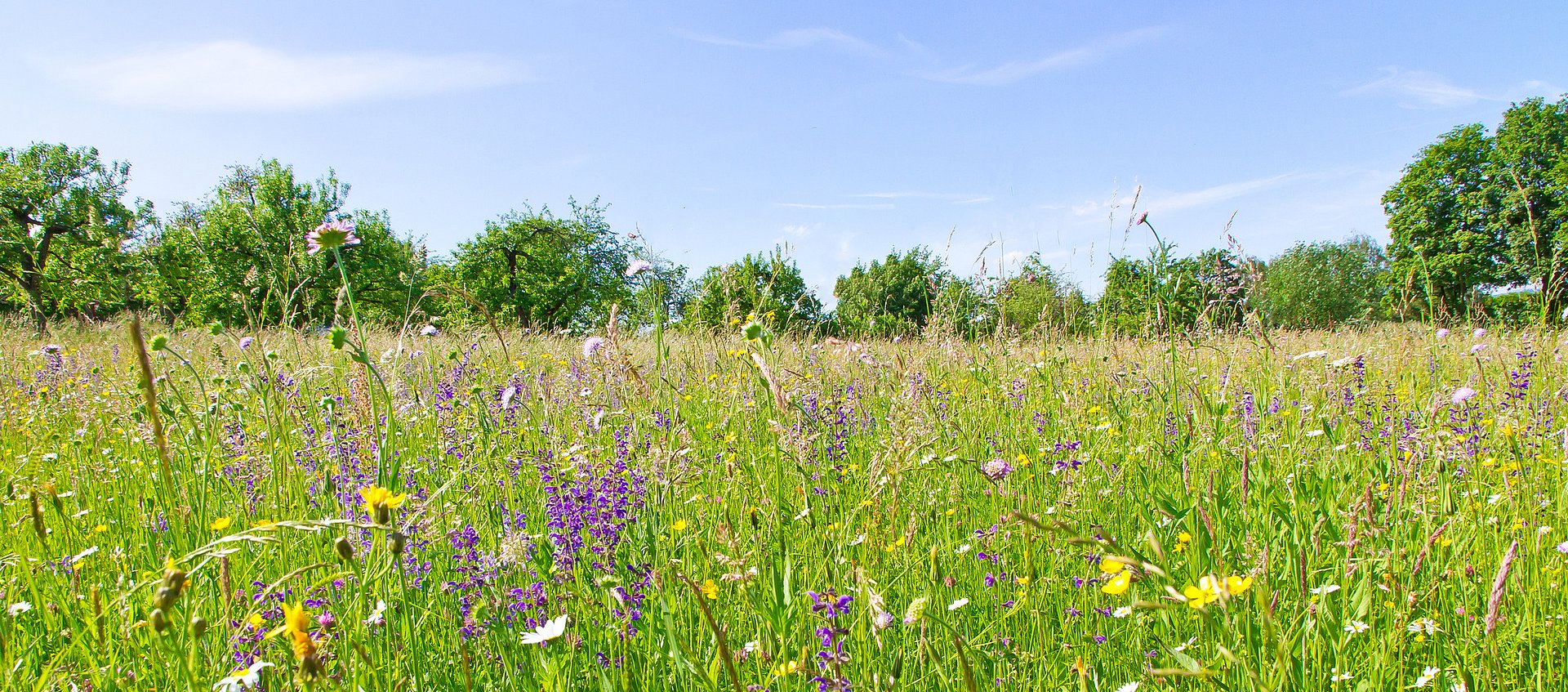Greater biodiversity in grasslands leads to higher levels of ecosystem services
Flowering meadows benefit humankind

The more it swarms, crawls and flies the better it is for humans. This is the finding of a study published in “Nature”. More than 60 researchers from a number of universities were involved, including the Technical University of Munich, the Institute of Plant Sciences at the University of Bern and the Senckenberg Biodiversity and Climate Research Centre in Frankfurt. A diverse ecosystem populated by many species from all levels of the food chain provides higher levels of ecosystem services, the team reports. Even rather unpopular insects and invisible soil-dwelling organisms are important in maintaining a wide range of ecosystem services. The results underline the necessity of maintaining species-rich ecosystems for the good of humanity.
Grasslands full of flowers are not only beautiful they also provide many important services for humans. These include food production, alongside supporting services such as soil development, regulating services such as pest control and climate regulation and cultural services such as the use of the grassland for recreation. A grassland is also a complex ecosystem containing many species belonging to different levels in the food chain, so called "trophic levels".
Humans are causing declines in biodiversity for many of these groups and evidence from experiments on plants suggests this might threaten ecosystem services. However, studies had not looked at diversity at many trophic levels at the same time.
A 60-strong research team, led by Dr. Santiago Soliveres from the University of Bern, therefore studied all groups in a grassland food chain for the first time. They collected data on a total of 4600 species of animal and plant from nine trophic groups, including often neglected ones such as micro-organisms in the soil and insects that live in the soil or on the plants. "The data was collected as part of a programme supported by the Deutsche Forschungsgemeinschaft in 150 grasslands across Germany, the so called ‘Biodiversity Exploratories’", says Professor Wolfgang Weisser of the Chair for Terrestrial Ecology at the Technical University of Munich (TUM) - "it constitutes the most extensive ecological sampling in Europe."
Biodiversity required within all trophic groups
“Working out how different groups affect ecosystem services is like trying to solve a very complicated puzzle but with our extensive data we are able to put together a coherent picture of how important individual groups are for fourteen ecosystem services. Each ecosystem service is dependent on at least three groups and the higher the number of species within the group, the more reliably the ecosystem service is provided. In addition, each individual group influences at least one ecosystem service,” Soliveres, lead author for the study, summarises the results.
Dr. Eric Allan from the University of Bern adds: “Many different groups are important for providing essential ecosystem services. In order for nature to continue ‘working’ reliably for us we therefore need to protect biodiversity at all levels in the food chain, including in often overlooked groups such as microbes or insects. This is especially important for regulating processes and cultural services.”
The importance of overlooked organisms
Microbes and insects are overlooked and are not generally considered in conservation. However, this study shows that view needs to change because many insects and soil organisms play a central role, alongside plants, in supplying the services we depend on. “Plants supply biomass which forms the beginning of the food chain, but insects act as pollinators and soil organisms increase soil fertility through the breakdown and retention of chemical elements such as phosphorus. The more different species there are, particularly within these three groups, the more positive the effect on all services,” explains Soliveres.
Often, fertiliser is applied to the soil in order to increase soil fertility and thus increase plant growth. Fertilisers help in the short term, but if biodiversity is reduced, then the downsides outweigh this. Maintaining high levels of biodiversity throughout the food chain is therefore more economical and wiser in the long term than destroying it for short term gains.
The importance of biological diversity for ecosystem services has been underestimated
“If biodiversity is rapidly destroyed, what consequences does this have for humans? What courses of action are available? Thus far, there has been insufficient research into this, which is one of the reasons why the international biodiversity council IPBES was founded,” explains Prof. Markus Fischer from the Institute of Plant Science at the University of Bern and head of the Biodiversity Exploratories project. This study also shows that the importance of biological diversity has been underestimated because previous research only focussed on individual trophic groups: “Our extensive research programme demonstrates how important it is to study the broader context and that there is a need for action to protect ecosystems,” summarises Fischer.
Publication:
Soliveres et al.: Biodiversity at multiple trophic levels is needed for ecosystem multifunctionality. Nature, 17. August 2016, DOI 10.1038/nature19092.
contact:
Prof. Dr. Wolfgang W. Weisser
Technical University of Munich
Chair for Terrestrial Ecology
Phone: +49 8161 71-3496
wolfgang.weisser@tum.de
www.toek.wzw.tum.de